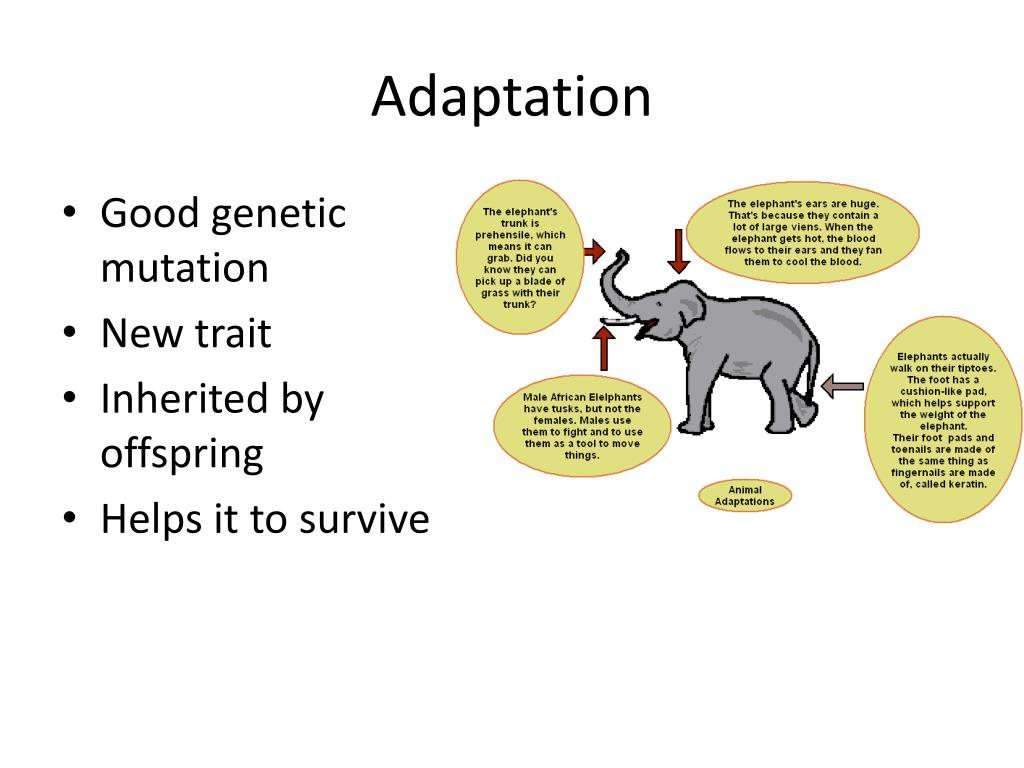Genetic adaptation plays a crucial role in the survival and evolution of species, as evidenced by recent studies on the house finch. This common backyard bird has become an intriguing subject in the field of evolutionary adaptation, showcasing remarkable traits that enhance its resilience against diseases. A groundbreaking pangenomic study highlights a significant DNA inversion that fosters disease resistance in birds, indicating how genetic variations can influence an organism’s response to challenges in its environment. By analyzing these genetic adaptations, researchers gain deeper insights into the mechanics of evolution and the intricate relationship between genetics and disease. As the body of knowledge continues to grow, the house finch stands out as a model for understanding the broader implications of genetic adaptability in the natural world.
When discussing the evolution of species, the term “adaptive genetics” often surfaces as studies examine how organisms respond to environmental pressures. Insights derived from the genetic makeup of the house finch reveal the intricate patterns that emerge during evolutionary change, particularly in relation to disease resistance. These findings not only illustrate the significance of genetic diversity but also emphasize the importance of structural variations, such as DNA inversions, in shaping a species’ resilience. As researchers delve into the genetic complexities provided by tools like pangenomic analysis, we find a clearer picture of how adaptation manifests in nature. Ultimately, the investigation into adaptive mechanisms contributes to our understanding of wildlife evolution and informs conservation strategies in the face of emerging pathogens.
Unraveling House Finch Genetics: Insights from a Pangenomic Study
The house finch has emerged as a pivotal model for understanding genetic adaptation, particularly in response to environmental challenges. Recent findings from a pioneering pangenomic study have shed light on the structural variations within its DNA. By combining genomic data from multiple finches, researchers have unveiled crucial genetic adaptations that enhance the bird’s resilience against diseases. This collective approach to genetic analysis provides a comprehensive view that traditional methods, which often focus on singular genes or isolated DNA segments, fail to capture.
The study specifically identified a significant DNA inversion that has persisted throughout the evolution of house finches, highlighting its role in bolstering disease resistance. These kinds of structural variations, previously overlooked in narrower investigations, are essential for understanding how species adapt over generations. As researchers continue to delve into house finch genetics, the implications extend beyond a single species, offering valuable insights into evolutionary adaptation mechanisms applicable to other avian populations and even mammals.
Genetic Adaptation: The Role of DNA Inversions in Evolutionary Processes
DNA inversions serve as critical drivers of genetic adaptation, and the case of the house finch exemplifies this concept. By examining the long stretches of DNA through advanced sequencing techniques, scientists like Bohao Fang have uncovered a dramatic inversion that appears to confer enhanced immunity against specific pathogens. This adaptation demonstrates how evolutionary processes are shaped not merely by small mutations but also by larger structural changes within the genome.
Moreover, the intricate relationship between DNA inversion and disease resistance highlights the dynamic nature of evolution. As pathogens evolve, species like the house finch adapt through these genetic shifts, providing a real-world example of how organisms can develop effective defenses without external intervention, such as vaccines. Understanding these mechanisms is crucial for predicting the potential responses of other species, including humans, to emerging infectious diseases.
Evolutionary Adaptations in Birds: The Case of House Finch Disease Resistance
Birds exhibit a fascinating range of evolutionary adaptations, particularly regarding disease resistance, and the house finch’s experience is a testament to this phenomenon. This common backyard bird, once severely affected by a conjunctivitis outbreak, has demonstrated a remarkable capacity for survival and resistance, showcasing the power of natural selection in real-time. The research leveraging pangenomic techniques not only maps these adaptations but also elucidates the pathways through which the house finch has come to thrive despite significant pathogenic pressures.
As the environment continues to change and new diseases emerge, the evolutionary advantages present in the house finch’s DNA provide a template for studying resilience in other avian species. By observing the genetic variation within the house finch population over time and across different geographic areas, researchers can gain insights into how birds— and indeed other animals—might react to future disease challenges. This ongoing research represents a critical intersection of genetics, ecology, and evolutionary biology.
The Importance of Pangenomic Studies in Understanding Evolution
Pangenomic studies represent a transformative approach to understanding the complexities of genetic variation and evolutionary adaptation. By analyzing genomic data across multiple specimens, researchers can attain a comprehensive view of genetic diversity that might be obscured when focusing on a single reference genome. The groundbreaking work related to house finches exemplifies how pangenomics can uncover essential structural variations, such as DNA inversions, that play a significant role in the bird’s ability to resist diseases.
This comprehensive approach enhances our understanding of how adaptation occurs at a population level rather than just at the individual level. As researchers like Bohao Fang continue to explore the intricacies of house finch genetics, the findings reinforce the broad applicability of pangenomic methodologies in evolutionary biology. They not only enhance insights into avian genetics but also pave the way for future studies aimed at unraveling similar adaptations in other species, thereby enriching our understanding of the evolutionary processes that shape life forms on Earth.
Mechanisms of Disease Resistance in Birds: Insights from House Finch Research
The mechanisms underlying disease resistance in birds have gained significant attention, particularly through the lens of house finch research. The discovery of specific genetic adaptations, such as unique DNA inversions, provides robust evidence of how these birds have evolved to combat infectious threats. Understanding the genetic factors that confer immunity can help scientists draw parallels with other species, including humans, and inform conservation efforts for both avian populations and public health strategies.
Research on the house finch has revealed intricate connections between genetic variation and pathogen prevalence, showing how certain structural changes in the genome offer survival advantages in the face of disease outbreaks. As scientists continue to decode these genetic signals, the implications extend beyond the avian world, offering insights into the broader questions of disease resistance and adaptation in the face of global health challenges.
Advancements in Genetic Sequencing Techniques: Implications for Evolutionary Biology
Advancements in genetic sequencing techniques, particularly long-read sequencing, have revolutionized our understanding of evolutionary biology. By enabling researchers to analyze longer segments of DNA, these methods have uncovered significant structural variations that were previously undetectable. In the context of house finch genetics, this technological leap has been crucial in identifying a long-standing DNA inversion that enhances disease resistance, illustrating the importance of innovative methodologies in genetic studies.
These advancements not only provide clarity on the genetic mechanisms of adaptation but also encourage the exploration of genetic diversity among broader populations. As scientists apply these innovative sequencing techniques to other avian species or ecological systems, the potential for discovering new evolutionary pathways and mechanisms becomes limitless. The implications of these discoveries could reshape our understanding of genetic adaptation across all forms of life, paving the way for future research in evolutionary biology.
Implications of House Finch Genetic Studies for Conservation and Ecology
The implications of house finch genetic studies extend far beyond academic curiosity, positioning themselves as crucial components of conservation and ecological practices. As researchers decipher the genetic adaptations that have allowed the house finch to thrive amidst disease challenges, these insights can inform conservation strategies for both threatened avian species and broader ecosystems. Understanding how genetic resilience develops can guide interventions aimed at preserving wildlife in a rapidly changing environment.
Moreover, the utilization of pangenomic approaches offers a blueprint for how conservationists might address genetic bottlenecks in endangered species. By observing the genetic variations that contribute to disease resistance in house finches, similar methodologies can be applied to at-risk populations, enhancing their survival prospects. This alignment of genetic research with conservation efforts emphasizes the intertwined fates of biodiversity and ecological health in the face of environmental change.
Investigating the Coevolution of Hosts and Pathogens in Nature
The ongoing investigation into the coevolution of hosts and pathogens reveals profound patterns of interaction in nature, as exemplified by the house finch’s adaptations. The dynamics of this relationship illustrate a continuous arms race where hosts develop novel defenses while pathogens evolve countermeasures. As researchers explore the genetic mechanisms behind these adaptations, particularly the case of the house finch’s resistance to conjunctivitis, they illuminate the intricate web of evolutionary pressures inherent in ecosystems.
Understanding the coevolution of species like the house finch and their pathogens not only enriches our knowledge of evolutionary biology but also equips us with strategies to anticipate potential pandemics in wildlife. The insights gleaned from these interactions can pave the way for advanced research into how wildlife populations can adapt to emerging diseases, ultimately influencing both conservation practices and public health approaches as our planet continues to grapple with infectious threats.
Future Directions in Genetic Research: Lessons from the House Finch Study
The lessons learned from the house finch study lay the groundwork for future directions in genetic research, particularly in understanding evolutionary processes. As the field adopts pangenomic methodologies, it becomes increasingly clear that an integrative approach to studying genetic variations can unveil hidden patterns of adaptation and resilience. This shift in perspective encourages a broader, more holistic view of how species evolve and adapt in the face of environmental pressures.
Moreover, as researchers build on the foundational insights gained from house finch genetics, opportunities arise to explore similar structural variations across diverse species. The potential to discover novel genetic adaptations in various animals could not only enhance our understanding of biodiversity but also inform conservation efforts aimed at maintaining the resilience of ecosystems. By harnessing these insights, future genetic research could reinforce the interconnectedness of species and the evolutionary advancements that are pivotal for thriving in a changing world.
Frequently Asked Questions
What role does genetic adaptation play in disease resistance in birds like the house finch?
Genetic adaptation is crucial for disease resistance in birds, exemplified by the house finch’s ability to cope with infections such as conjunctivitis. A recent pangenomic study identified a significant DNA inversion in the house finch that has potentially granted increased resistance to certain pathogens. This adaptation is a direct consequence of evolutionary pressures and highlights how genetic variations can enhance survival in changing environments.
How does a pangenomic study contribute to our understanding of evolutionary adaptation in species like the house finch?
Pangenomic studies provide a comprehensive view of genetic variation across multiple individuals within a species, such as the house finch. This method allows researchers to uncover structural DNA variations, like inversions, that are critical for understanding evolutionary adaptation. Such insights help us comprehend how species develop traits that enhance their survival and resilience against diseases over time.
What is a DNA inversion and why is it significant in the study of genetic adaptation?
A DNA inversion is a type of structural variation where a segment of DNA flips and reinserts itself in the chromosome in reverse orientation. This alteration can have significant impacts on gene expression and functionality. In the case of the house finch, a recent study revealed an inversion that has been linked to disease resistance, highlighting how such genetic changes can drive evolutionary adaptation in response to environmental challenges.
How do historical genetic samples contribute to our understanding of genetic adaptation in birds like the house finch?
Historical genetic samples, such as those from house finches collected over decades, provide invaluable data for studying genetic adaptation. These samples enable researchers to analyze genetic changes in response to specific pathogens over time, revealing how species evolve naturally. Such longitudinal studies enhance our understanding of adaptive responses and inform conservation efforts in wildlife.
What implications does the genetic adaptation of the house finch have for other species, including humans?
The genetic adaptation observed in the house finch offers important insights into how various species, including humans, might evolve in response to infectious diseases. Understanding the mechanisms behind natural resistance, as showcased by the finch’s adaptations, can inform medical research and public health strategies aimed at enhancing disease resilience across different populations.
| Key Point | Details |
|---|---|
| Study Focus | Research on the house finch reveals insights into genetic adaptation and disease resistance. |
| Research Method | A pangenomic approach combines genomic data from multiple specimens for a comprehensive view of genetic information. |
| Findings | A major DNA inversion in house finches contributes to their resistance against diseases. |
| Implications | Understanding genetic adaptation can help predict responses of other species, including humans, to infectious diseases. |
| Conclusion | The study showcases the role of structural genetic variants in adaptive evolution. |
Summary
Genetic adaptation is a critical process by which species develop resilience against diseases. The study of house finches provides a compelling example of how structural genetic changes can facilitate such adaptations over time. It highlights the importance of a broader genetic analysis approach, offering valuable insights not only for avian species but also for understanding potential human responses to future infectious challenges.



